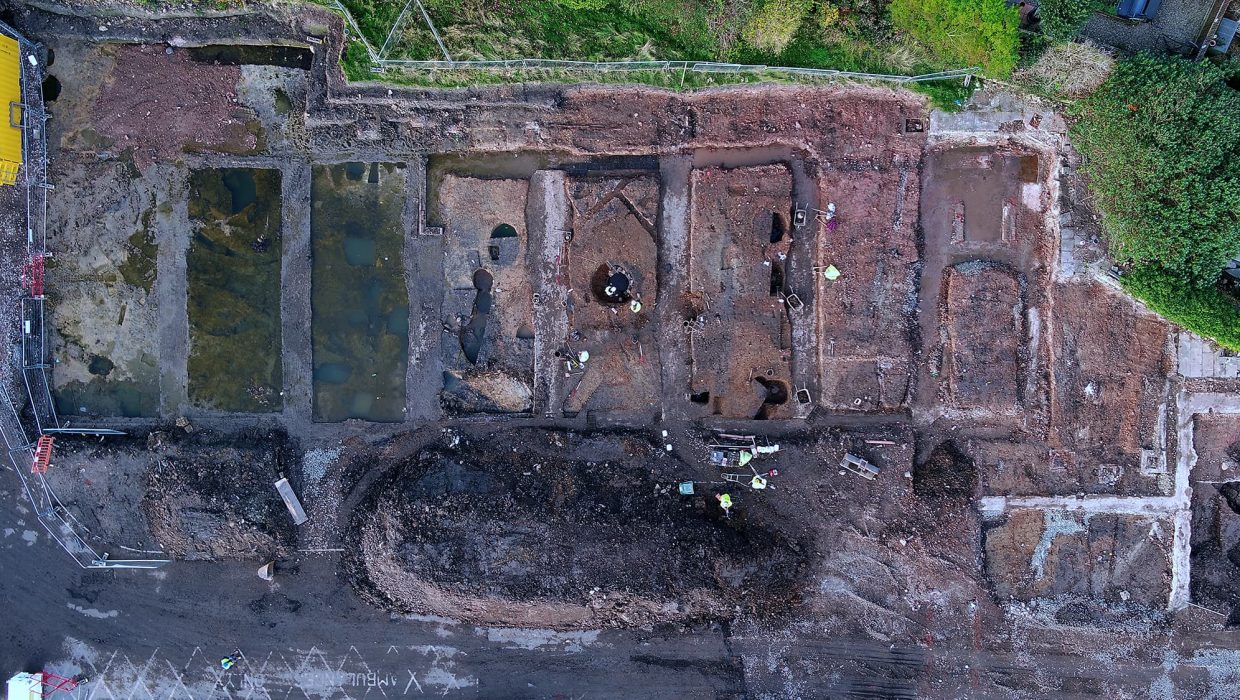Our archaeologists at Ecus, part of Cura Terrae, have been working on an excavation at a site in Derby. The main purpose of the excavation was to further contribute to the understanding of land use and development during the mid-nineteenth century within the Castleward area.
Archaeological excavations can produce a plethora of finds, including those that are specifically representative of children throughout history, such as this small collection recovered from our excavations in Derby. It includes artefacts indicative of games and leisure activities, as well as a fragment of pottery that derived from a plate, possibly intended to be used by a child.
The gaming pieces recovered included ceramic marbles and dominoes. The former mostly ranged from 13-15mm in diameter and were left to the natural cream of the clay. One example, however, was larger than the others, measuring 18mm in diameter, and was made from two toned swirled clay. The dominoes were made from worked bone, with the pips being carved into the tiles, and were representative of a double 3 and a double 5. Both were common games played by children throughout the Victorian and early modern periods.
Additional leisure activities were also represented by the recovery a thimble and pins. The thimble had a small diameter of 7.6mm, suggesting that it may have been intended for use by a child, and displayed decorative indented circles on the outside body. It was recovered alongside seven small pins and a fragment of a safety pin, indicating that the material was linked to domestic sewing practices.
Finally, a plate fragment was recovered that displayed a black transfer-printed scene, taken from the famous novel Uncle Tom’s Cabin written by Harriet Beecher Stowe in the mid-19th century. It would have originally depicted the opening scene of the book, in which the slave Eliza makes a daring escape with her son across the ice over the Ohio River, to escape her masters. Plates depicting such literary scenes were common during the 19th and 20th centuries and were usually intended to be used by children.
This small assemblage indicated that the site excavated was related to a domestic community during the Victorian-modern periods, one that included children, and shows what leisure activities they enjoyed taking part in.
Read more about our archaeological finds or check out our blog: what is archaeology?




